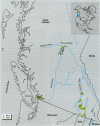Abstract
We assessed chlorinated hydrocarbon contamination of mink and river otters on the Columbia and Fraser River systems of northwestern North America, in relation to morphological measures of condition. We obtained carcasses of mink and river otters from commercial trappers during the winters 1994-1995 and 1995-1996. Necropsies included evaluation of the following biological parameters: sex, body mass and length, age, thymus, heart, liver, lung, spleen, pancreas, kidney, gonad, omentum, adrenal gland and baculum masses, baculum length, and stomach contents. Livers were analyzed, individually or in pools, for residues of organochlorine (OC) pesticides, polychlorinated biphenyls (PCBs), dibenzo-p-dioxins, and dibenzofurans. Contaminant levels were relatively low compared to those documented in other North American populations, although they ranged higher than those detected during an earlier survey (1990-1992) of these regional populations. Body condition varied slightly among collection regions, but showed no relationship with contaminant burden. Mink from the upper Fraser River had less fat stores and also had some of the lowest OC contamination levels observed. Similarly, a few individuals with enlarged livers and kidneys had low contaminant levels. Although a few individual animals with gross abnormalities of reproductive systems did not show high levels of contamination, there was a significant negative correlation between total PCB concentrations (as Aroclor 1260) and baculum length in juvenile mink (r = 0.707; p = 0.033; n = 8). The association of juvenile baculum length with eventual reproductive success is unknown, but further characterization of reproductive organ morphology and relationship to contaminants should be undertaken in a larger subset of these populations.
Full text
PDF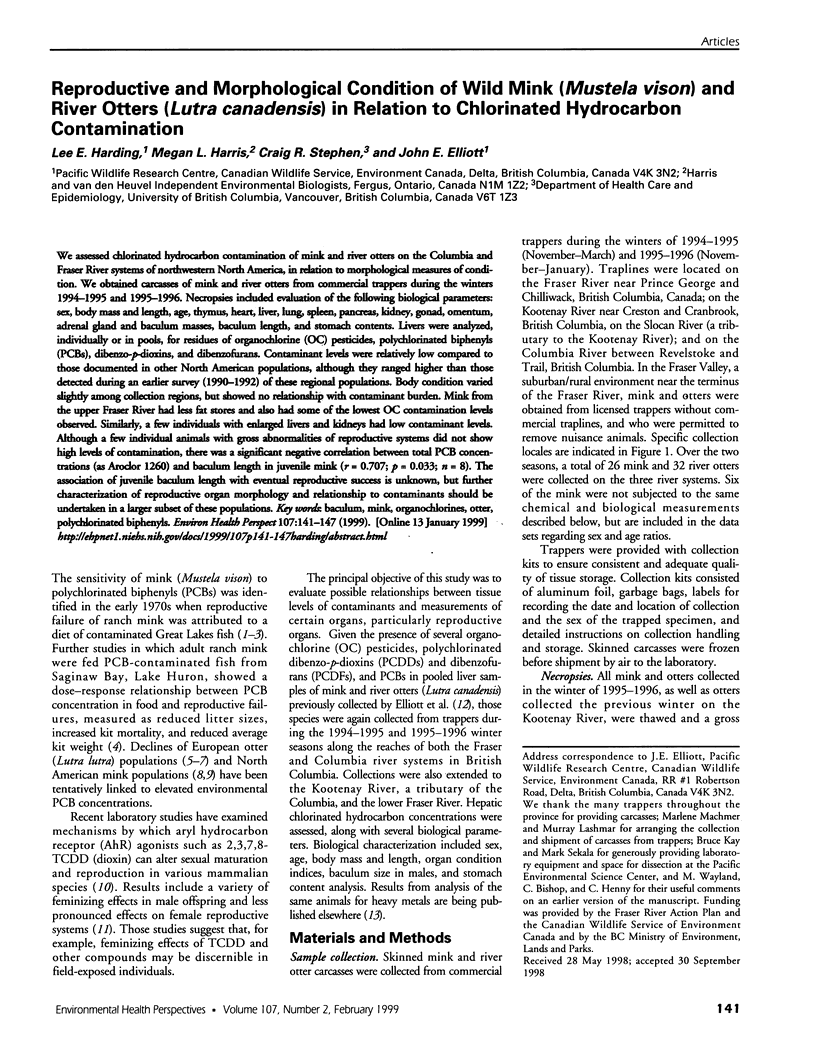
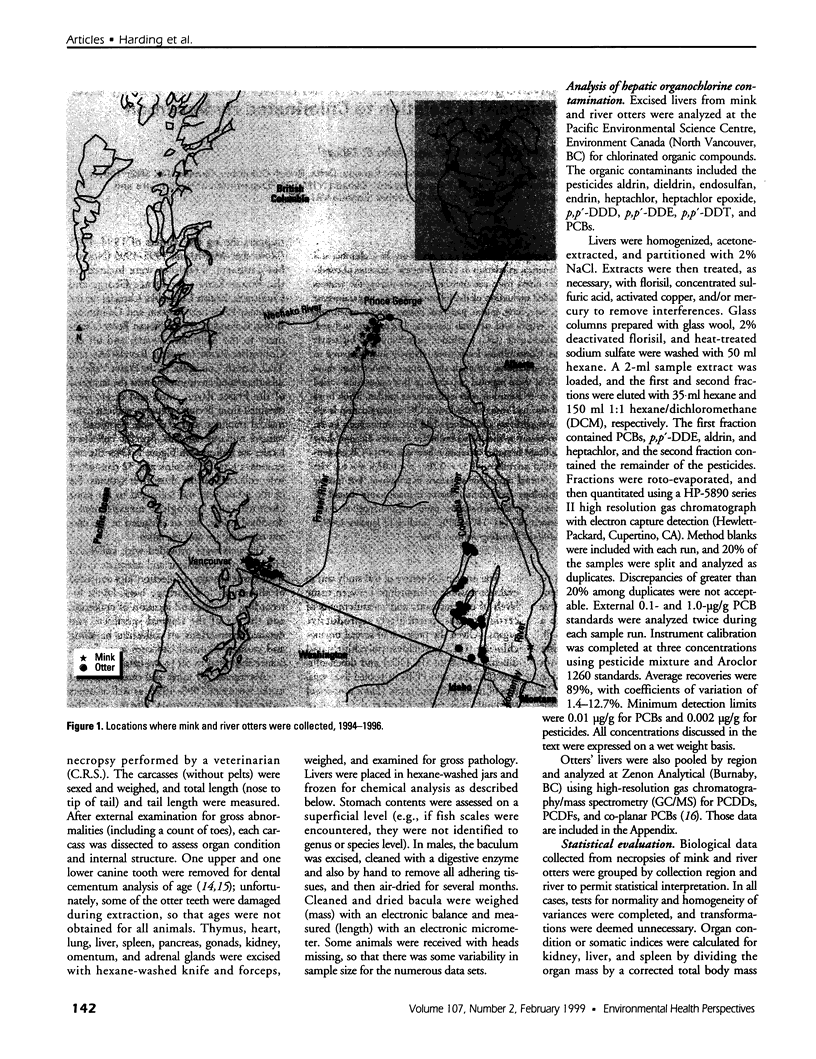
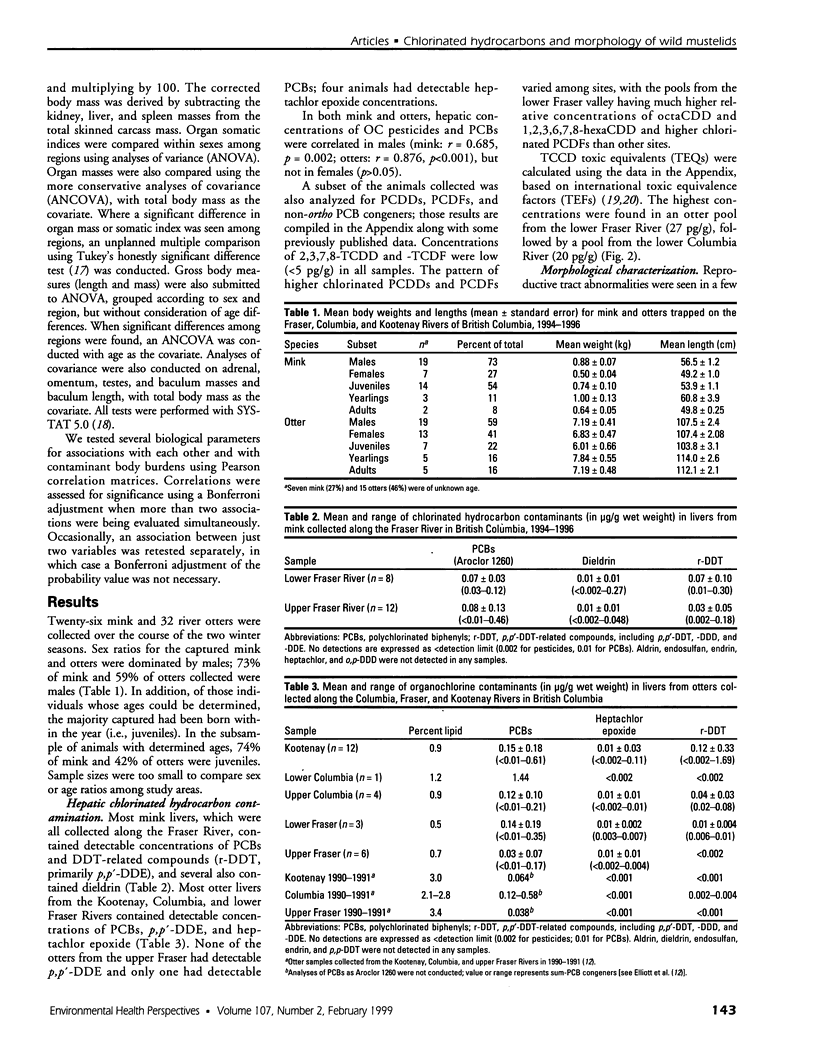

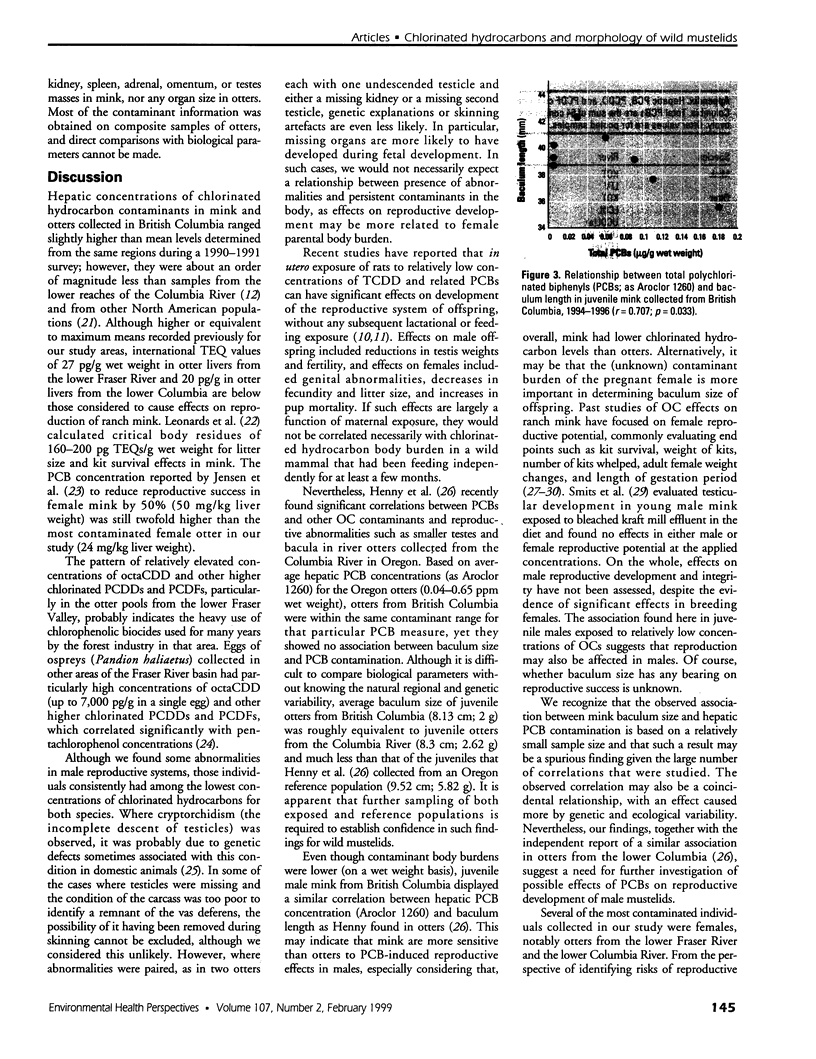
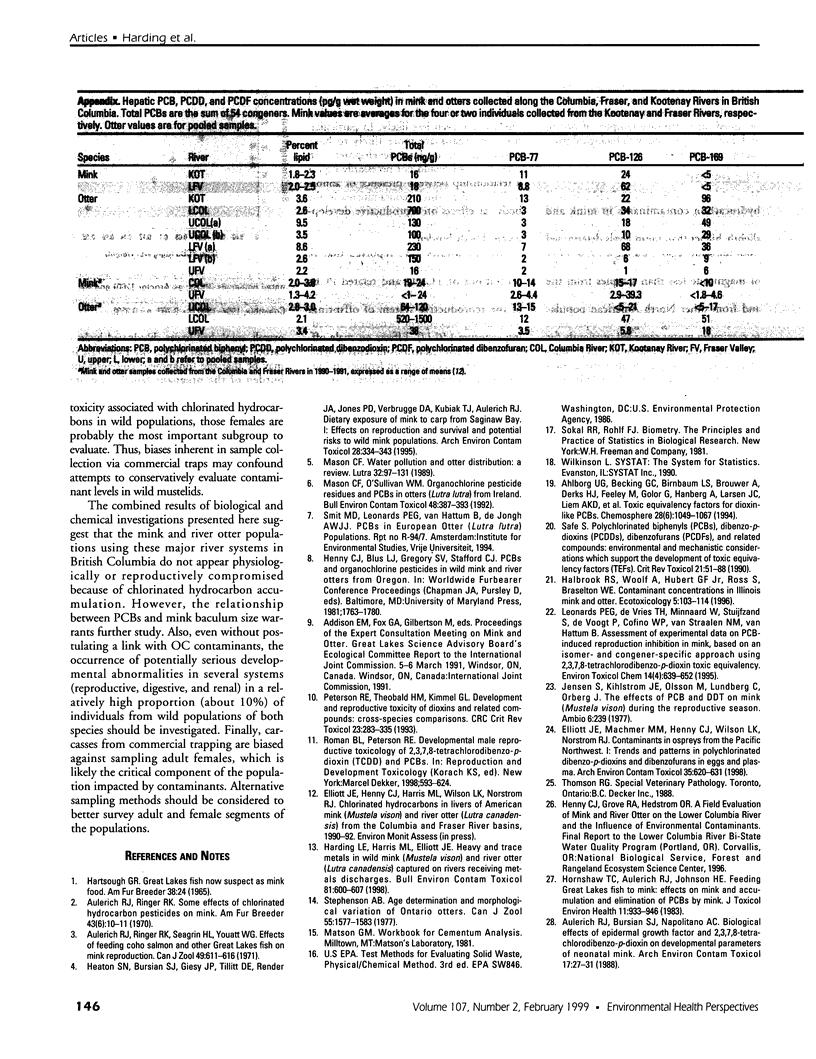
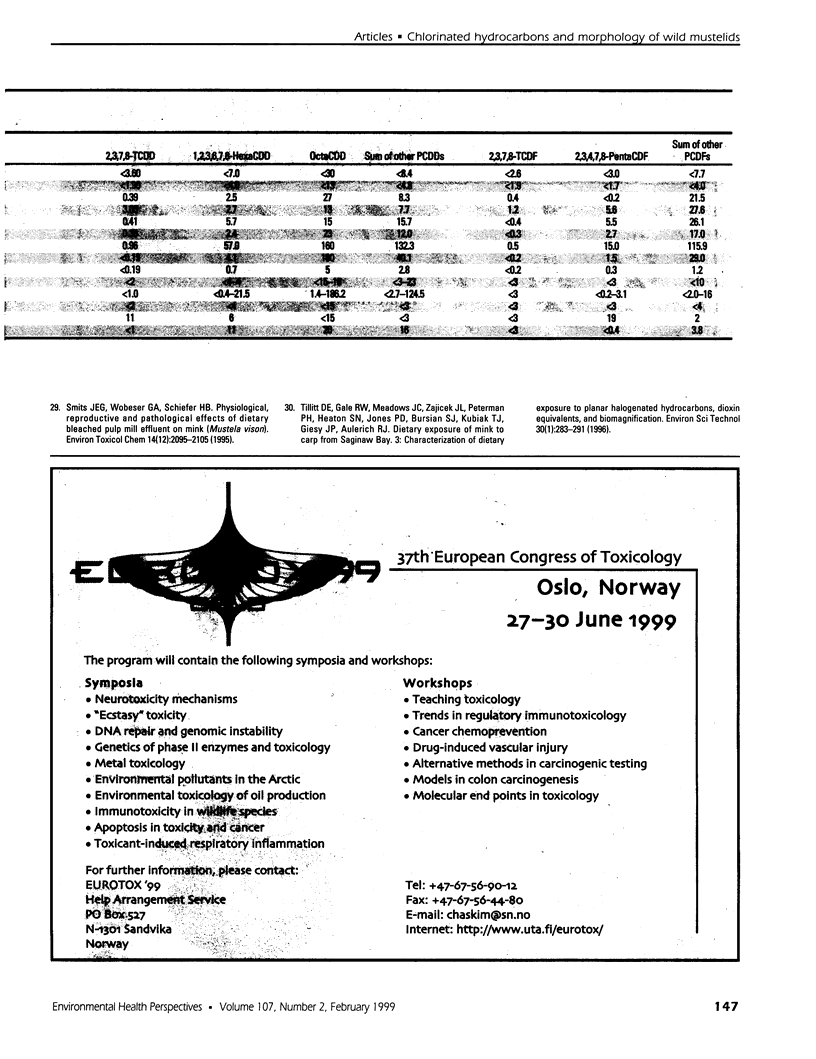
Images in this article
Selected References
These references are in PubMed. This may not be the complete list of references from this article.
- Aulerich R. J., Bursian S. J., Napolitano A. C. Biological effects of epidermal growth factor and 2,3,7,8-tetrachlorodibenzo-p-dioxin on developmental parameters of neonatal mink. Arch Environ Contam Toxicol. 1988 Jan;17(1):27–31. doi: 10.1007/BF01055150. [DOI] [PubMed] [Google Scholar]
- Aulerich R. J., Ringer R. K., Seagran H. L., Youatt W. G. Effects of feeding coho salmon and other Great Lakes fish on mink reproduction. Can J Zool. 1971 May;49(5):611–616. doi: 10.1139/z71-098. [DOI] [PubMed] [Google Scholar]
- Elliott J. E., Machmer M. M., Henny C. J., Wilson L. K., Norstrom R. J. Contaminants in ospreys from the Pacific Northwest: I. Trends and patterns in polychlorinated dibenzo-p-dioxins and -dibenzofurans in eggs and plasma. Arch Environ Contam Toxicol. 1998 Nov;35(4):620–631. doi: 10.1007/s002449900424. [DOI] [PubMed] [Google Scholar]
- Harding L. E., Harris M. L., Elliott J. E. Heavy and trace metals in wild mink (Mustela vison) and river otter (Lontra canadensis) captured on rivers receiving metals discharges. Bull Environ Contam Toxicol. 1998 Nov;61(5):600–607. doi: 10.1007/s001289900803. [DOI] [PubMed] [Google Scholar]
- Heaton S. N., Bursian S. J., Giesy J. P., Tillitt D. E., Render J. A., Jones P. D., Verbrugge D. A., Kubiak T. J., Aulerich R. J. Dietary exposure of mink to carp from Saginaw Bay, Michigan. 1. Effects on reproduction and survival, and the potential risks to wild mink populations. Arch Environ Contam Toxicol. 1995 Apr;28(3):334–343. doi: 10.1007/BF00213111. [DOI] [PubMed] [Google Scholar]
- Hornshaw T. C., Aulerich R. J., Johnson H. E. Feeding Great Lakes fish to mink: effects on mink and accumulation and elimination of PCBS by mink. J Toxicol Environ Health. 1983 Apr-Jun;11(4-6):933–946. doi: 10.1080/15287398309530396. [DOI] [PubMed] [Google Scholar]
- Mason C. F., O'Sullivan W. M. Organochlorine pesticide residues and PCBs in otters (Lutra lutra) from Ireland. Bull Environ Contam Toxicol. 1992 Mar;48(3):387–393. doi: 10.1007/BF00195637. [DOI] [PubMed] [Google Scholar]
- Peterson R. E., Theobald H. M., Kimmel G. L. Developmental and reproductive toxicity of dioxins and related compounds: cross-species comparisons. Crit Rev Toxicol. 1993;23(3):283–335. doi: 10.3109/10408449309105013. [DOI] [PubMed] [Google Scholar]
- Safe S. Polychlorinated biphenyls (PCBs), dibenzo-p-dioxins (PCDDs), dibenzofurans (PCDFs), and related compounds: environmental and mechanistic considerations which support the development of toxic equivalency factors (TEFs). Crit Rev Toxicol. 1990;21(1):51–88. doi: 10.3109/10408449009089873. [DOI] [PubMed] [Google Scholar]



